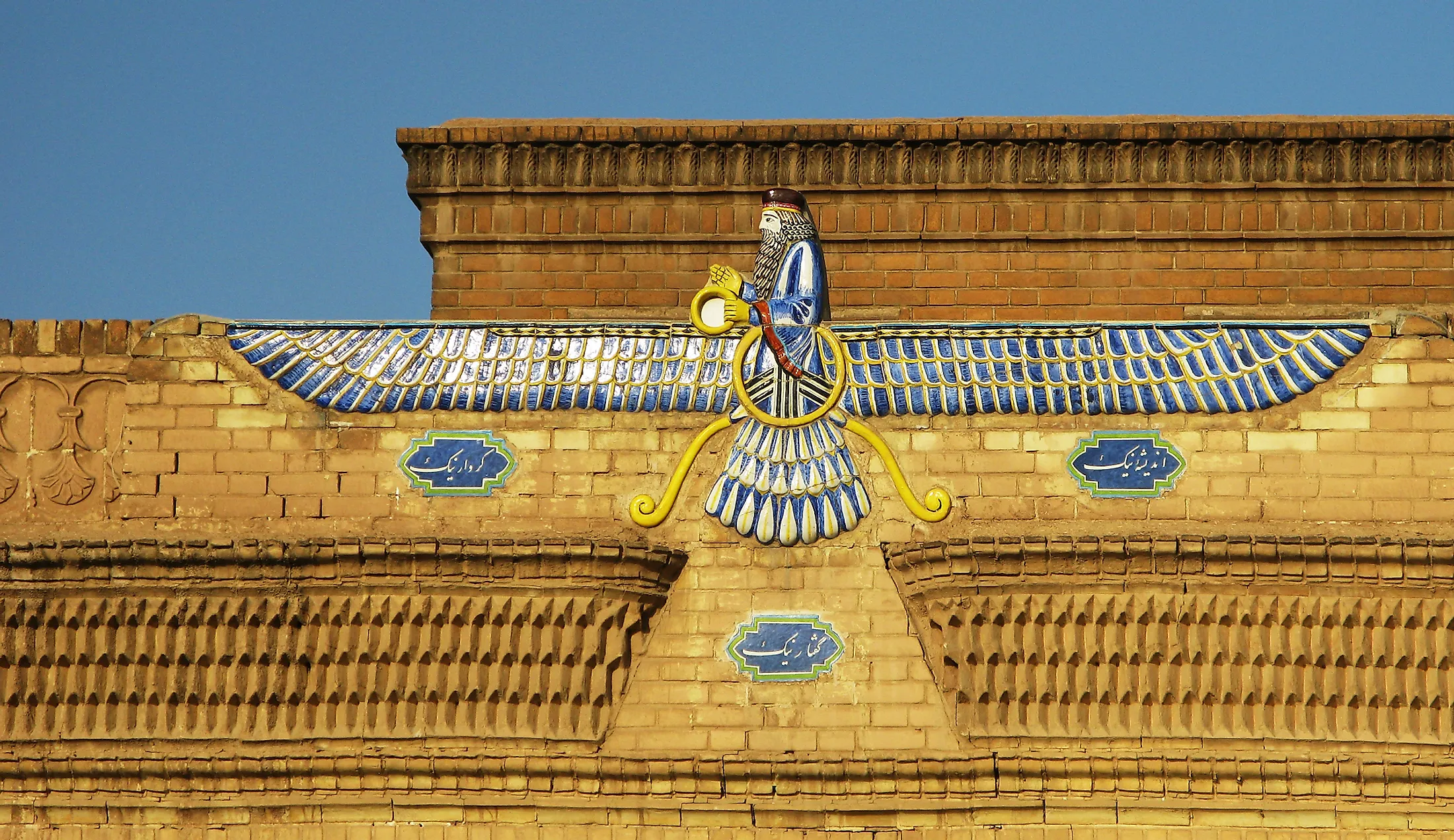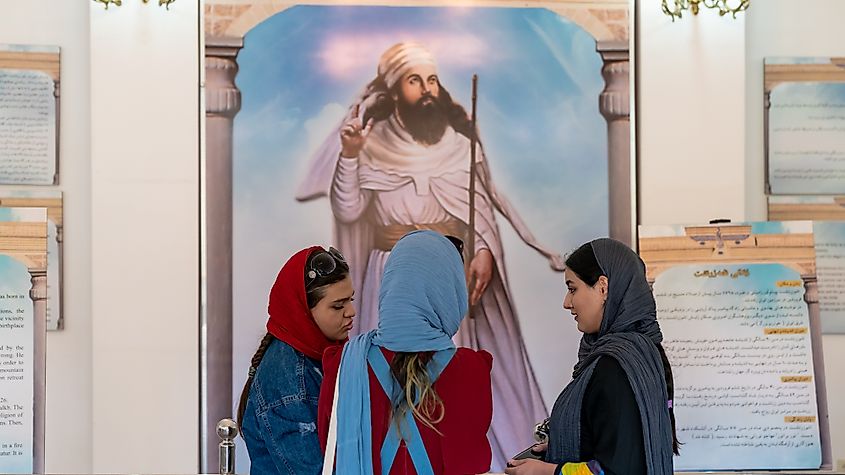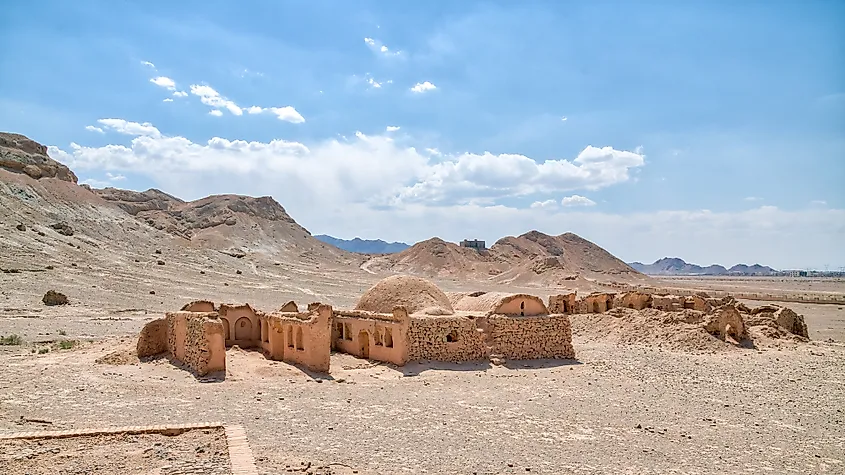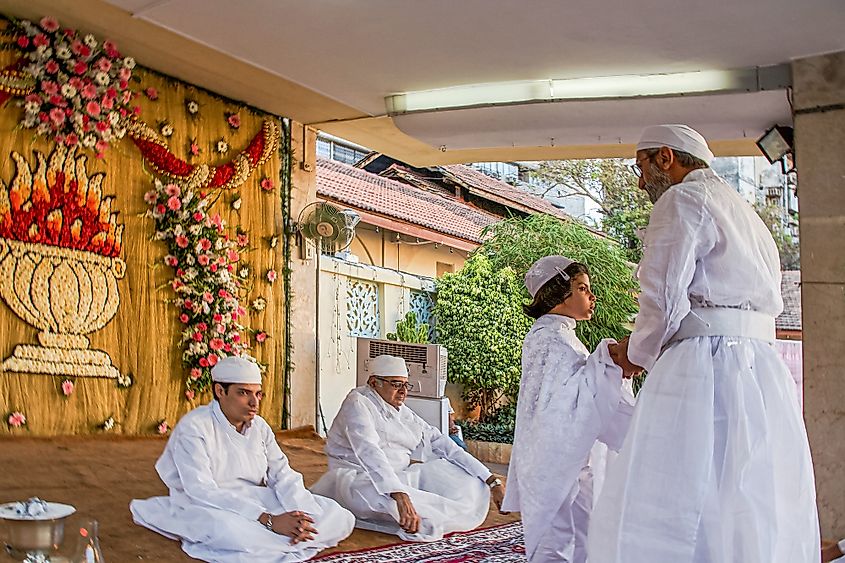
Zoroastrianism
Zoroastrianism, an ancient pre-Islamic religion from Iran, centers on the Avesta and teachings of Zarathushtra Spitama, also known as Zoroaster. Its followers worship Ahura Mazda as the supreme deity and face the evil spirit Angra Mainyu in a dualistic battle between good and evil.
The Iranian prophet and religious reformer Zarathushtra, known outside Iran as Zoroaster (the Greek version of his name) and active before the 6th century BCE, is traditionally considered the founder of this religion. Zoroastrianism features both monotheistic and dualistic elements and is thought to have influenced other major Western religions like Judaism, Christianity, and Islam.
Zoroastrianism still exists in isolated regions in Iran and, more prominently, in India, where descendants of Zoroastrian Persian immigrants are called Parsis or Parsees.
The Prophet Zoroaster

There is no universal consensus on when Zoroaster, also known as Zarathustra, was born. According to Zoroastrian tradition, Zoroaster lived 258 years before Alexander the Great conquered Persepolis, which was the capital of Persia under the rule of the Achaemenian dynasty, in 330 BCE. But Zoroastrian tradition also says that Zoroaster was 40 years old when he converted Vishtaspa, likely a king in Central Asia, in 588 BCE, which would make Zoroaster’s date of birth fall in the year 628 BCE. Some scholars, however, suggest that Zoroaster may have lived around 1200 BCE, while others contend that the founder of Zoroastrianism was alive a full millennium before traditional dates.
In any event, Zoroaster was born somewhere in what is now northeastern Iran or southwestern Afghanistan. The society he was born into was largely polytheistic, meaning that people worshipped many gods. Zoroaster, however, rejected polytheism. He also rejected the class structure, which he found to be oppressive, as well as the power that princes and priests had over ordinary people at the time. According to Zoroastrian tradition, at the age of 30, Zoroaster had a divine vision while bathing in a river during a pagan purification ritual. He saw a “Shining Being” that revealed itself as Vohu Manah (“Good Mind”). Vohu Manah led Zoroaster to Ahura Mazda, which is the Zoroastrian name for God. Ahura Mazda was accompanied by the Amesha Spentas (Holy Immortals). This was the first of several visions that Zoroaster had. During each vision, he asked Ahura Mazda and the Amesha Spentas questions. The answers that he received are regarded by the Zoroastrians as the teachings of Zoroastrianism.
Initially, Zoroaster’s teachings were not received well, either by religious leaders of the time or ordinary people. Thus, after 12 years, Zoroaster decided to leave his homeland in search of people who would listen to him. His journey led him to Bactria, a kingdom that included parts of present-day Afghanistan, Uzbekistan, and Tajikistan. The king and queen of Bactria were the first leaders persuaded by Zoroaster to convert to his new religion. These monarchs subsequently made Zoroastrianism their kingdom’s official religion.
Principles Of Zoroastrianism

At the core of Zoroaster’s new religion is the belief in one god, the aforementioned Ahura Mazda, who is omniscient, omnipotent, and omnipresent. He is regarded by Zoroastrians as supreme above all else. Furthermore, it is Ahura Mazda that created all life. All of what he created is regarded by Zoroastrians as pure. Therefore, Zoroastrians strive not to harm the environment on Earth that Ahura Mazda created, which is why some have referred to Zoroastrianism as “the first ecological religion”.
Another principle central to Zoroastrianism is the belief that Zoroaster is the prophet of Ahura Mazda. Zoroaster himself is not worshipped, but Zoroastrians believe that his visions were divine, including the previously mentioned Holy Immortals that he encountered at the same time he encountered God. There are six of these Holy Immortals, each of whom represents different virtues. Vohu Mana represents good mind and good purpose; Asha Vahishta represents truth and righteousness; Spenta Ameraiti represents holy devotion, serenity, and loving kindness; Khashatra Vairya represents power and just rule; Hauravavat represents wholeness and health; and Ameretat represents long life and immortality.
The dichotomy of good and evil is also important to Zoroastrianism. According to Zoroastrian teachings, God has an adversary called Angra Mainyu, which translates as “destructive spirit.” It is he who created death, and all that is evil in the world. While Ahura Mazda resides in Heaven, Angra Mainyu resides in Hell. It is the deeds that a person performs over their lifetime that determine which of these realms they will enter after they die.
The Expansion And Decline Of Zoroastrianism

Zoroastrianism spread across Asia via the historic Silk Road, a network of trading routes that spread from China, through Asia, and all the way to Europe. It eventually became the official religion of the mighty Persian Achaemenid Empire, an empire that stretched from Anatolia and Egypt to northern India and Central Asia. Cyrus the Great, who founded the empire, was himself a devout Zoroastrian. He did not, however, attempt to impose Zoroastrianism on the peoples that he conquered. In fact, he was a tolerant ruler by the standards of the time, allowing the people he conquered to continue practicing their religions. According to Jewish tradition, for example, it was Cyrus the Great who liberated the Jewish people held captive in Babylon and allowed them to return to Jerusalem to rebuild Solomon’s Temple.
Zoroastrianism would continue to thrive over the next thousand years. It was the official religion of the Persian dynasties that followed the Achaemenid Empire, including the Parthian and Sassanian Empires. The religion’s dominance over the Persian world, however, would come to a crashing halt in the 7th century CE. Between 633 and 651 CE, Arab Muslims invaded Persia, eventually bringing an end to the Sassanian Empire. Upon conquering Persia, they imposed extra taxes on Zoroastrians in exchange for allowing them to continue practicing their religion, among other measures that made life difficult for practitioners of Zoroastrianism. Eventually, most Iranian Zoroastrians converted to Islam.
Zoroastrianism Today

Today, Zoroastrianism has an estimated 100,000 to 200,000 followers. The largest communities of Zoroastrians are located in India and Iran. In the former, there are an estimated 60,000 Parsi, which is the name given to followers of Zoroastrianism in India. Iran has about 25,000 Zoroastrians, but they are heavily persecuted by the country’s Shiite Islamic fundamentalist regime. Other large communities of Zoroastrians can be found in Iraqi Kurdistan, the United States, Uzbekistan, Tajikistan, Canada, the United Kingdom, Australia, Azerbaijan, the Arab states of the Persian Gulf, Pakistan, and New Zealand.











